How coaching years at Notre Dame shaped Ohio State athletic director Gene Smith
The voice remains clear to Joe Unis.
It was Thanksgiving weekend in 1978, and he was standing on the sideline at the Los Angeles Memorial Coliseum.
Notre Dame faced an early decision on fourth down in its annual rivalry game against Southern California when a 22-year-old special teams coach stuck up for the kicker.
Gene Smith leaned into a huddle of Irish coaches weighing whether to go for it and expressed his belief that Unis should try a field goal.
“Give him a chance,” Smith said.
Ohio State football: It's Notre Dame week. Here's what you need to know ahead of Ohio State vs. Notre Dame
The attempt was from 47 yards, a test of the range of a walk-on who had been the backup for most of that fall and made only one in his career, but Smith effused optimism.
“He was always positive,” Unis said.
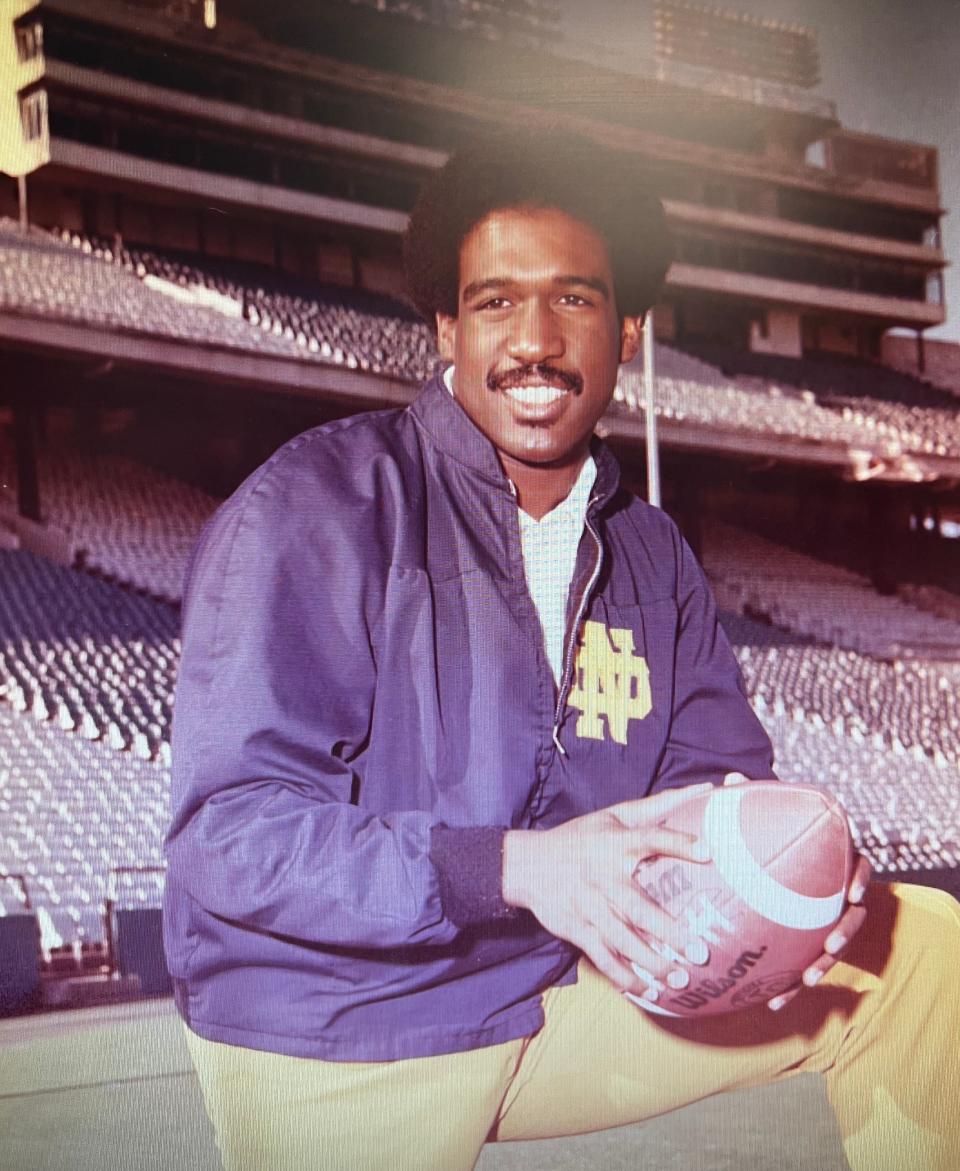
It paid off. Unis’ kick split the uprights in a moment that still resonates with him nearly half a century later.
“For me, that was a big deal,” Unis said. “That was the longest kick I ever made. If it wasn’t for Gene, I don’t know I would have ever gotten the chance.”
Ohio State’s visit to Notre Dame this week harkens memories of Smith’s time in South Bend, where he spent four seasons after graduation coaching special teams prior to a 38-year career in administration, the last 18 coming as the Buckeyes’ athletic director before the 67-year-old’s retirement next year.
The top-10 matchup on Saturday will mark the first time Smith has returned for a game at Notre Dame Stadium since he was last an assistant with the Irish in 1980.
The period offers an early glimpse of the traits that have been on display leading the largest athletic department in the nation and becoming one of the most influential voices within the college sports industry.
Former players recount him as an eager, well-liked assistant who encouraged them at practices and managed a range of personalities in the locker room.
College athletics: Ohio State AD Gene Smith claims recruits are asking for $5K to visit campuses in NIL era
The period from 1977 through 1980, when Smith joined the staff as a graduate assistant before a promotion to special teams coach, became a formative one.
“It helped me in so many different ways,” Smith said. “That was an unbelievable experience.”
Smith had early enthusiasm at Notre Dame
He was covered in sweat.
When the Irish practiced returning kickoffs and punts, Smith got hands-on. He was eager to demonstrate how to follow blockers, resulting in the puddles of perspiration.
“It would look like he ran 4 miles,” said Jim Stone, a running back who also returned kickoffs, “and we just went through a couple plays of punt return and kick return.”
Notre Dame set up a wedge on its kickoff returns, a formation that bunched together blockers shoulder to shoulder, and Smith made sure to show Stone or others his preferred approach to following the wall.
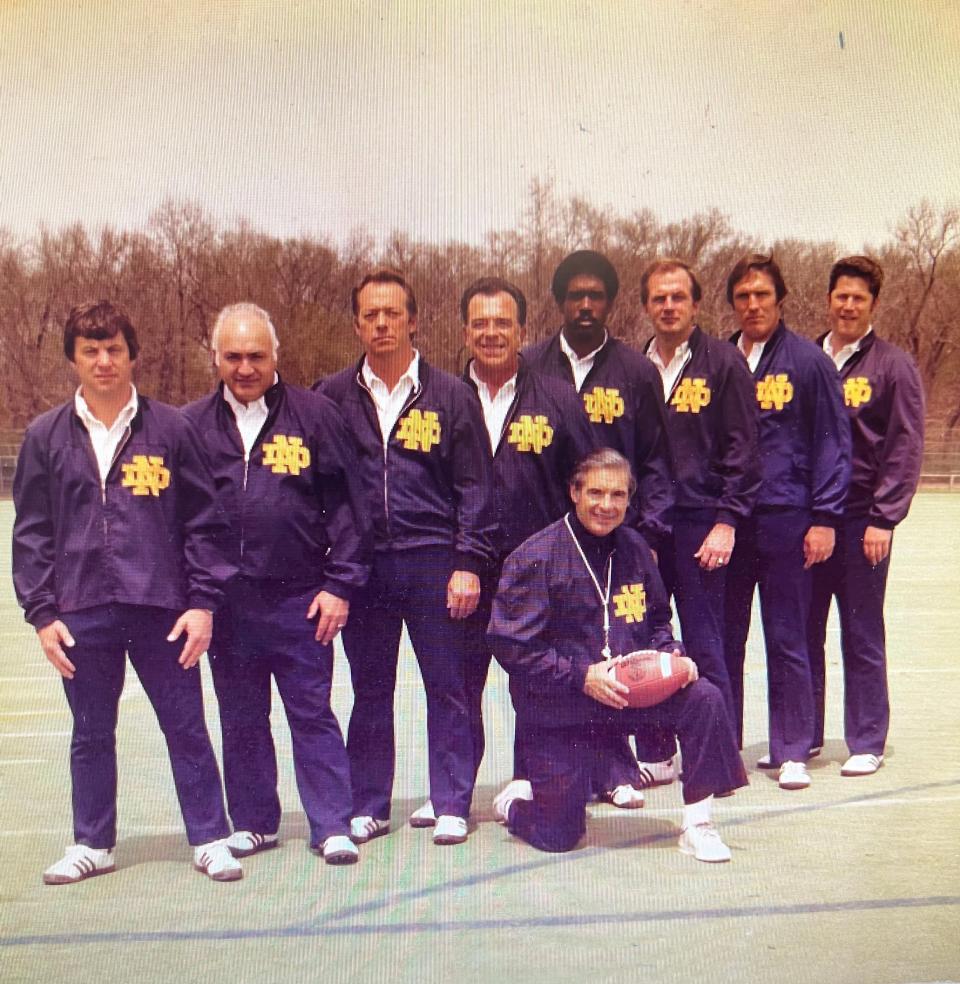
Stone described himself as a glider, someone with a tendency to drift to the sideline. Smith wanted him to hit the hole right away.
The enthusiasm was apparent to players.
“You would have thought we were doing offense or defense the way he would get so excited,” Stone said.
Smith said he benefited from coach Dan Devine’s appreciation for special teams. Devine dedicated periods of practice for working on returning or blocking kicks. He empowered Smith to run meetings.
If the Irish needed more time to go over their blocking wedge, Devine reserved an additional 10 minutes after stretching for Smith to work with a handful of blockers and a returner.
“He gave me that,” Smith said.
It was a scheme that demanded they be in sync, requiring exact timing. The wedge would form as the returner caught the kick.
But extra reps meant pulling away players from their position groups. Smith knew the support was not a guarantee.
“I had a few of those ideas,” Smith said, “and they allowed me to implement them.”
In practices before a win at Alabama in 1980, Smith worked with starting quarterback Blair Kiel on quick kicks.
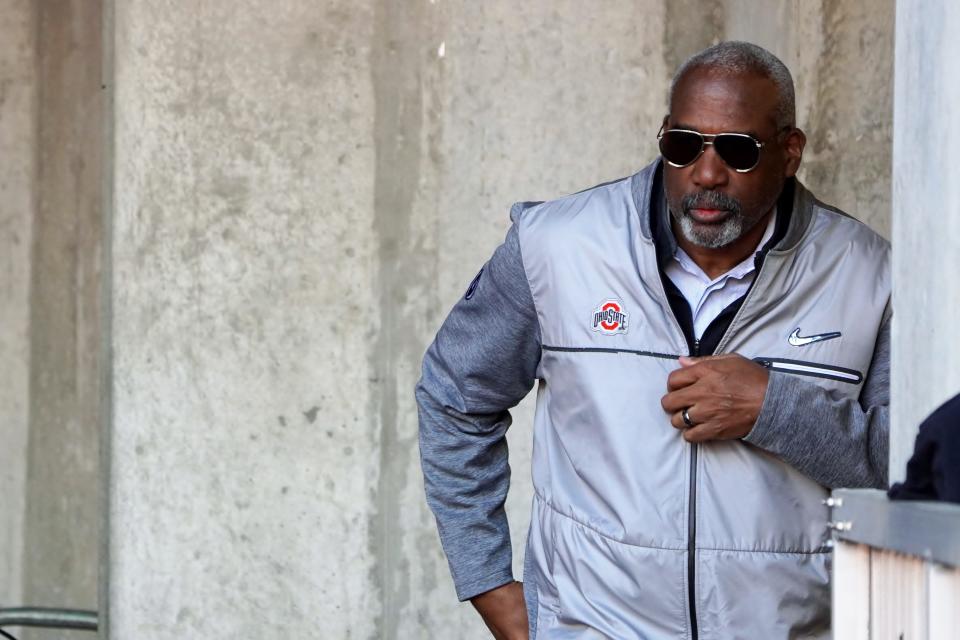
Kiel needed to get them off fast in order to catch the Crimson Tide by surprise and pin them deep in their territory.
“I went to Devine and said, ‘Hey, he’s going to be our quarterback, he’s also our punter. It’s your call when we quick kick, but I need to make sure he’s ready. And they gave me time.’”
It was not an afterthought.
More: Inside the scheduling of the first Ohio State-Notre Dame regular season game in decades
Smith learned to manage players at Notre Dame
When Smith was a defensive end with the Irish, he caught some hollering. All of the defensive linemen did.
Joe Yonto, the longtime defensive line coach, was old-school.
“Everybody loved him,” Smith said, “but he would dress you down in a minute.”
It felt uncomfortable at times. Smith struggled seeing assistants jumping on players after they made a mistake at practice or on Saturdays.
The experience led him to develop a different coaching style.
More: Join the Ohio State Sports Insider text group with Bill Rabinowitz, Joey Kaufman Adam Jardy
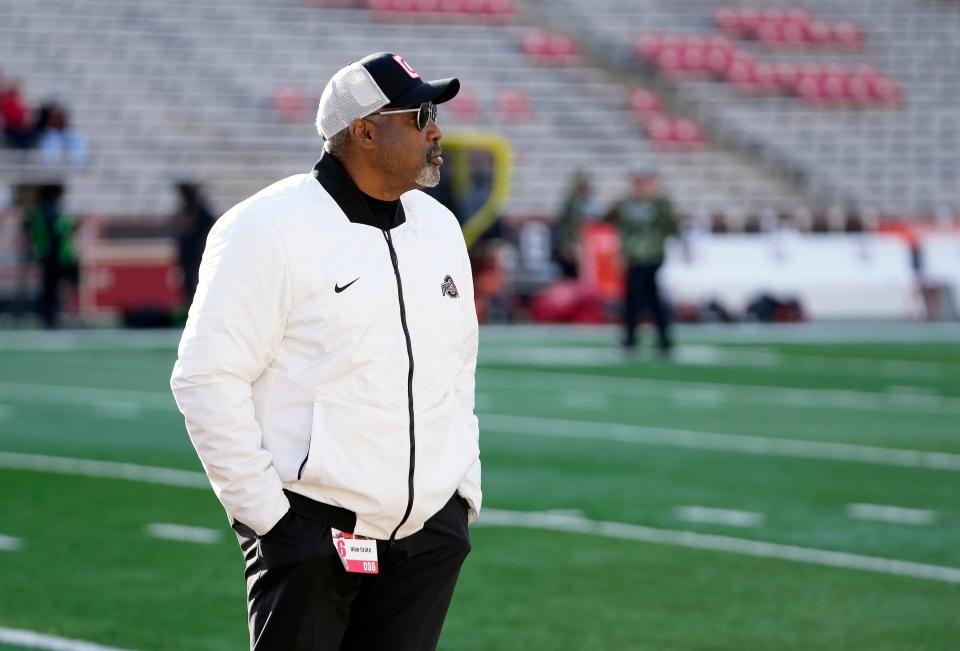
He took players aside to correct issues, leaning into the individual nature of special teams.
“I just felt that players deserved a one-on-one situation,” Smith said. “They don't want to be embarrassed. And special teams allowed me to do it that way.”
Smith reasoned it was a tact that also benefited his situation. He had made a sharp pivot from playing to coaching. The upperclassmen in his early years on the coaching staff had previously been teammates. Calling them out might seem insincere.
“I had a consciousness about that,” he said. “I couldn’t walk out and start yelling at guys I used to hang out with.”
Chuck Male, a kicker who transferred from Western Michigan in 1978, found Smith honest and direct with his expectations.
They were laid out in those personal interactions.
“I don't ever remember him screaming at anybody,” Male said. “Back then, coaches would get in guys’ faces. He never did that. He would say what he needed to say. He had good people skills, and you listened to him.”
It happened among all the specialists.
“Gene went into details whether it was the long snapper, the holder, the kicker, the up backs,” Unis said. “He’d just pull you aside, ‘You just need to do this, this or this.’ He’d give you that one-on-one something in your ear.”
Smith leaves Notre Dame and coaching
The retirement of Devine led to an abrupt end to Smith’s coaching career.
After Devine stepped down at the end of the 1980 season, the Irish hired Gerry Faust of Moeller High School in Cincinnati as his replacement. Smith was not among the three assistants retained by Faust.
“I would have gone back if he hired me,” Smith said, “but he didn’t.”
Smith did not chase other coaching opportunities despite his experience at one of the top programs in the country. Notre Dame finished in the top 10 in three out of his four seasons, including winning a national championship in 1977.
“I made up my mind I was out of coaching,” Smith said. “I didn’t aspire to go somewhere else, because I didn’t aspire to be a coach. It just kind of came on me.”
It was not in his earlier plans. He said Devine asked him out of the blue to be a graduate assistant in 1977 at a time when he was pursuing other careers. As a senior, Smith interviewed with the Secret Service and various banks after majoring in business.
Even years later, he thought about returning to Cleveland to help out his father, who was an electrician and ran a business with five others. Smith wondered if he could scale it up.
Smith ultimately went into sales at IBM, a career path that was more lucrative. His highest annual salary as an assistant at Notre Dame was just over $32,000.
“I made more in commissions,” Smith said with a laugh.
But after a couple of years, he realized his heart was not in the corporate world, and an opportunity emerged for him to return to college sports. Paul Shoults, who was the defensive backs coach at Notre Dame when Smith was a defensive end, had become the athletic director at Eastern Michigan.
Shoults pitched Smith on the administrative ranks as a chance to combine his business acumen with his coaching and playing background.
“He was right,” Smith said.
He hired Smith in 1983 as an assistant athletic director and groomed him as his successor. They met for coffee at 7 a.m. every Thursday for Smith to learn more about the industry.
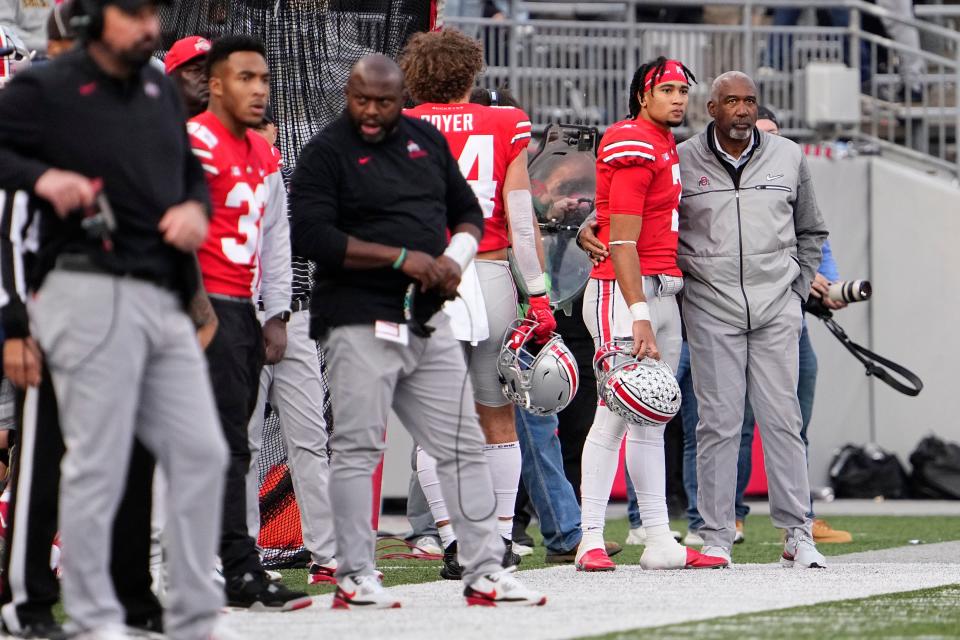
In addition to overseeing the budget, Smith was the administrator for nine of Eastern Michigan’s men’s varsity sports teams and felt comfortable interacting with the players and coaches.
“It was an easy transition to be at different sporting events,” Smith said, “and establish connections with the kids.”
The ease followed from his years as an assistant at Notre Dame.
“That’s one of the things that helped me to appreciate the diversity of people,” he said. “I knew that already, but I didn’t really understand it until I began to coach different personalities.”
After three years in the department, he took over for Shoults, beginning his climb as an athletic director to Iowa State and Arizona State before settling at Ohio State.
Smith 'would have been a good coach'
Joe Restic grew up in a coaching family.
His father, Joe Sr., led Harvard for over two decades before he retired as the winningest coach in the school’s history. So Restic was familiar with the profession by the time he enrolled at Notre Dame in 1975 and later sat in special teams meetings run by Smith.
Smith showed poise in such a setting.
“You’re talking in front of the whole squad,” Restic said. “You've got to know what you’re doing, and Gene was certainly prepared.”
Most players were in attendance since most position groups were involved on returns or block units.
It resulted in a wide audience of All-Americans to walk-ons for the budding assistant, one of the reasons Restic saw Smith as someone who could have continued coaching.
“I don't ever remember thinking that he was a new coach cutting his teeth,” Restic said. “You could tell he had done his homework, was successful and had the ability to get guys to perform. That's what you want out of a coach.
“So I think if he had stayed in that profession, you would have seen him have a lot of success, just like he's had success in the athletic director position.”
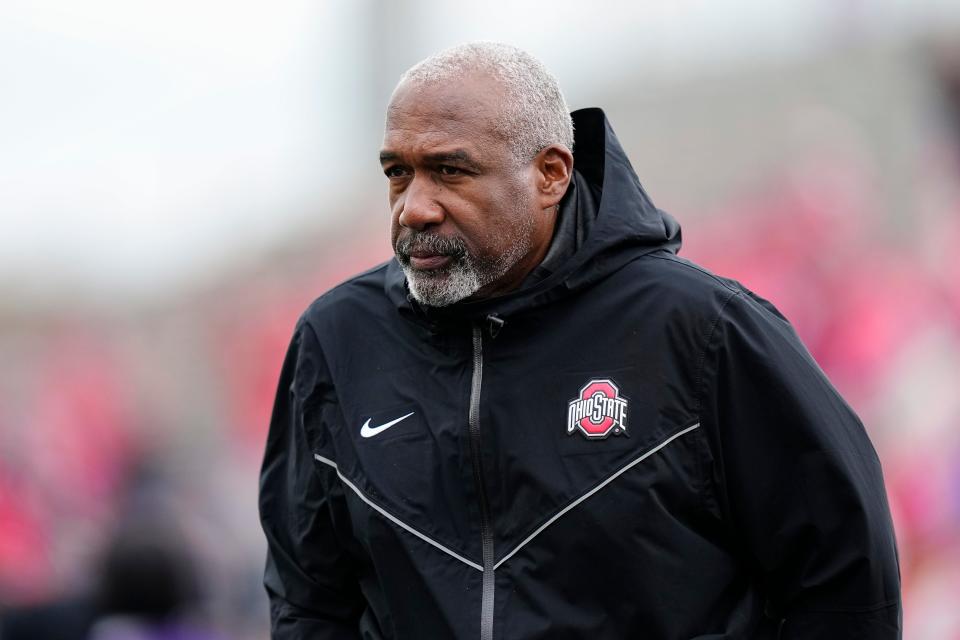
The half-dozen former players who spoke with The Dispatch for this story all agreed that Smith could have built a career in coaching.
Most noted his run as an athletic director and understanding of the sport. But they also saw his interpersonal skills, ones that later guided him as an administrator, as qualities that would have paid off had he remained on the sideline.
“You know how you see some coaches on sidelines,” Male said, “that even if a really bad play goes against them, or a really bad call, and they maintain very even emotion? I would liken Gene to be more like that. He did not get emotional and jump up and down and scream at refs or whatever. Or players. Very even kilter. Which is another reason I think he would have been a good coach.”
Smith to have weekend homecoming at Notre Dame
Smith’s arrival in South Bend on Saturday will involve a different pregame routine for the Buckeyes’ athletic director.
He plans to get there early to attend a tailgate for former Irish players outside of Notre Dame Stadium, making for a brief alumni reunion.
When he strolls the sideline during warmups, he expects he will take his time before heading to a suite in the press box to watch the game with a dozen Ohio State donors.
“I’ll probably stay a little longer,” Smith said. “Just savor the moment.”
The sights that are visible from the stadium, the Golden Dome and Touchdown Jesus, figure to allow to him to slip back in time.
The tunnel, too. It was in 1977, the year when Smith was a graduate assistant, that the Irish emerged from that hole in the north end zone wearing green jerseys for the first time, a wardrobe swap that is etched into program lore, a catalyst for a win over rival USC, a tradition that will continue this weekend. The players even followed a homemade Trojan horse onto the field.
“Guys went berserk,” Smith.
Yet it’s not a sightseeing trip, and as the prime-time kickoff for a top-10 matchup approaches, Smith anticipates any sentimentality to fade with the sunset.
“I’ll be nostalgic,” he said, “but when the game starts, it’s a game, and I change.”
Joey Kaufman covers Ohio State football for The Columbus Dispatch. Follow him on Facebook and X, the platform formerly known as Twitter. He can also be contacted at jkaufman@dispatch.com.
Get more Ohio State football news by listening to our podcasts
This article originally appeared on The Columbus Dispatch: Ohio State athletic director Gene Smith shaped by time at Notre Dame

